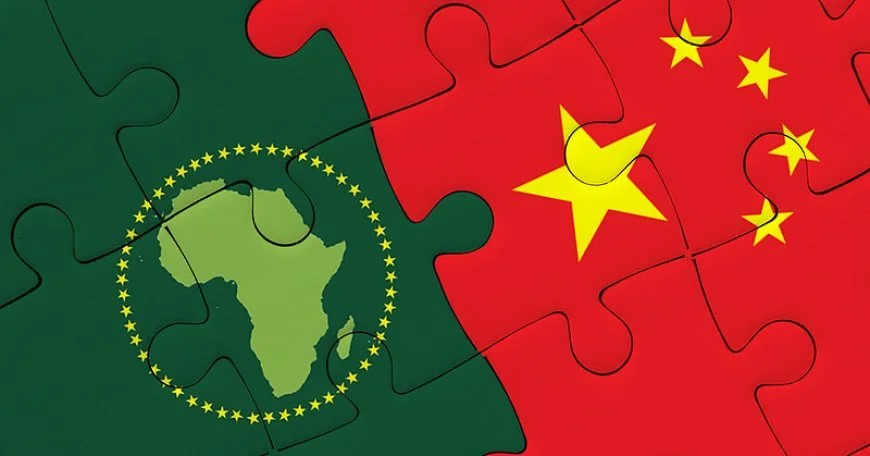What RMB Growth Means for Ratings: Credit Risk in a Multipolar Africa
China’s accelerating RMB internationalisation across Africa is creating new financing pathways that challenge traditional credit risk assessment frameworks. Egypt’s landmark Panda bond issuance and Standard Bank’s direct CIPS participation mark watershed moments in African capital markets. Yet credit rating agencies struggle to adapt methodologies designed for dollar-denominated, Western-intermediated flows to account for multipolar currency dynamics. The core question emerges: How should credit rating agencies evolve to reflect a world where financial infrastructure, not just currency, is diversifying?
RMB Instruments Gain Ground, but Constraints Remain
Egypt’s breakthrough Panda bond has established a credible template for African sovereign RMB financing. The RMB 3.5 billion ($478.7 million) sustainable bond issued in October 2023 achieved a competitive 3.51% coupon rate, backed by African Development Bank and Asian Infrastructure Investment Bank guarantees. This transaction won ‘Africa’s Best Bond Deal for 2024’ and demonstrated RMB market viability when China’s benchmark rates fell to historic lows. Kenya has announced plans for a $500 million Panda bond debut in fiscal year 2024, seeking alternatives to expensive Eurobond markets amid debt challenges. Meanwhile, Afreximbank achieved AAA rating from China Chengxin International Credit Rating (CCXI) in early 2025, becoming the first African multilateral to receive this designation in China.
Cross-border payment infrastructure is evolving rapidly. Standard Bank of South Africa became the first African bank to join CIPS as a direct participant in January 2025. These moves are not just technical - they reflect strategic efforts by African institutions to broaden financial sovereignty through infrastructure, not just ideology. African CIPS participation has grown from 52 indirect participants in July 2024 to 59 by April 2025, with processing times reduced from 3-5 days via SWIFT to seconds through CIPS.
However, structural constraints persist. Africa’s trade deficit with China limits natural RMB flows, while capital controls and restricted convertibility constrain broader adoption. Most China-Africa transactions continue in USD despite official encouragement for RMB usage.
CRA Frameworks Are Still Playing Catch-Up
Major Western credit rating agencies have not published systematic methodology updates specifically addressing RMB exposure for African sovereigns, despite increased Panda bond activity and CIPS integration. Current evaluation approaches treat China-related risks within existing external debt frameworks rather than developing RMB-specific assessment tools.
S&P Global noted the 82% increase in Panda bond issuance in 2023, calling 2024 ‘the best for panda bond issuance since the market opened in 2005’. However, this remains market commentary rather than formal methodology guidance. Agency assessments appear to view payment system diversification through a risk-benefit lens - recognising reduced SWIFT dependency benefits while noting increased dependence on Chinese financial infrastructure. Currency swap agreements receive minimal explicit coverage in published methodologies. CIPS processed RMB 123.06 trillion ($17.09 trillion) in 2023 across 1,427 financial institutions, yet agencies lack formal frameworks for evaluating the payment system integration’s credit implications.
The methodological gap creates assessment challenges. Agencies consistently cite opacity in Chinese loan agreements as complicating risk evaluation, with restructuring approaches differing from traditional Paris Club frameworks through bilateral negotiations.
Research reveals systematic differences between Chinese and Western CRA models
Academic studies of Chinese credit rating agencies identify systematic methodological divergences from Western approaches that extend beyond simple grade inflation. Research analysing jointly-rated entities finds Chinese agencies rate issuers 6-7 notches higher than Western counterparts, reflecting fundamental differences in risk assessment frameworks. Asset size receives dramatically different treatment in Chinese methodologies. Studies show domestic agencies favour larger firms significantly more than Western counterparts, measuring physical assets and tangible infrastructure as stronger positive credit factors. Research finds Chinese agencies show statistically insignificant coefficients on leverage while Western agencies treat it as strongly negative.
Analyses of Chinese sovereign rating patterns suggest geographical considerations play a role in assessments. Academic research examining Belt and Road Initiative financing treatment finds that Chinese foreign investment adversely affects sovereign ratings when countries participate officially in BRI according to Western methodologies, while Chinese CRAs view BRI infrastructure investment as credit-positive for recipient nations. Market data reveals complexity in dual-rated instrument pricing. Bonds rated by Chinese CRAs command different yields than Western-rated equivalents, but credit spreads correlate more strongly with Western ratings, highlighting methodological credibility differentials in international markets.
Currency diversification benefits compete with liquidity constraints
Offshore RMB liquidity remains structurally limited despite internationalisation efforts. CNH deposits represent approximately ¥1.5 trillion, only 1% of onshore deposits versus 30% for offshore USD. RMB represents only 2.5% of international currency usage versus 66% for USD. Currency diversification trends show modest but measurable shifts. ECB research shows continued reserve diversification into non-traditional currencies, with RMB-denominated credit to emerging markets increasing $240 billion since early 2022 while USD credit fell $380 billion. However, RMB holds only 2.3% of allocated FX reserves versus its economic weight.
African sovereign debt markets face elevated pricing. Countries experience an estimated ‘African premium’ of 2.9 percentage points above fair borrowing rates, making RMB financing attractive when Chinese rates are low, but adoption remains constrained by market access limitations.
African sovereigns achieve rating improvements despite participation complexities
All three major African countries with significant China exposure received positive outlook revisions in 2024-2025. Egypt gained positive outlooks from all three major agencies following IMF program expansion. Nigeria received positive outlook from Fitch amid reform progress. South Africa earned positive outlook from S&P following Government of National Unity formation. Market access has improved but pricing remains elevated. After nearly two-year hiatus, African sovereigns returned to Eurobond markets in Q1 2024 with oversubscribed issuances from Côte d’Ivoire, Benin, and Kenya. However, average coupon rates of 8.5% significantly exceed refinanced debt costs, reflecting elevated risk perceptions. Chinese lending data shows $182.28 billion in loans across 1,306 transactions to 49 African countries, with 2023 marking first increase since 2016. However, 56% of 2023 lending ($2.59 billion) focused on financial institutions rather than direct sovereign exposure, indicating evolving Chinese risk management approaches.
Conclusion: When financial architecture changes, the logic of credit must evolve
The evidence reveals a fundamental disconnect between rapidly evolving financial infrastructure and static credit assessment methodologies. A Panda bond with a domestic AAA rating - issued in RMB, guaranteed by multilaterals, and yet interpreted through legacy CRA models - signals a system under stress.
Credit rating agencies must develop sophisticated frameworks for evaluating multipolar currency dynamics, moving beyond ad hoc assessments within existing external debt models. The systematic differences between Chinese and Western agency methodologies create market confusion and potential mispricing of dual-rated instruments that could become increasingly common.
For African policymakers and multilateral officials, the evidence suggests measured optimism about RMB diversification benefits while maintaining realistic expectations about scale and timeline. Currency diversification can reduce USD concentration risks and potentially lower borrowing costs in favourable Chinese interest rate environments, but requires careful balancing against liquidity constraints and methodological recognition challenges.
This is not about bias – it is about readiness. RMB internationalisation is real, but its credit logic remains under-theorised. As financial sovereignty increasingly operates through currency and payment infrastructure, rating agencies that fail to adapt risk obsolescence in a multipolar world where African governments are constructing more resilient and strategic credit narratives.
📺 Watch on Youtube: Rated – with Daniel Cash
Explainer videos on how credit rating agencies shape the world
→ youtube.com/@RatedWithDanielCash
📸 Follow: @RatedWithDanielCash on Instagram
Visual explainers, quotes, and reform insights
→ instagram.com/RatedWithDanielCash
💼 Connect: Dr. Daniel Cash on LinkedIn
→ linkedin.com/in/daniel-cash-61684623
🌐 Visit: www.drdanielcash.com
Writing, research, and reform work all in one place



